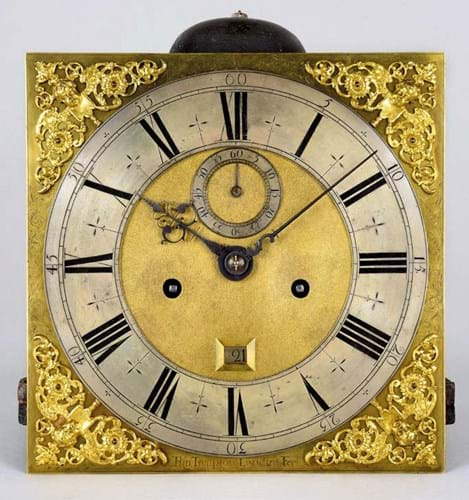
The clock, numbered to both the well-preserved eight-day movement and the trunk door 241 for c.1694, fills one of the missing gaps in the Tompion oeuvre. As is indicated on an old trade label inside the trunk door of the case: This clock stood for many years at Halswell Hall Devonshire the ancestoral [sic] home of the late Lord Wharton.
However, until now it has remained unrecorded. A similar Tompion longcase clock with mulberry veneers, dubbed The Guggenheim Tompion, is numbered 223. The numbering of Tompion clocks, that began c.1682 at a time when the business at The Dial and Three Crowns, Water Lane had expanded significantly, is thought to be the first time that a serial numbering system was applied to manufactured goods. It was done not for posterity but for accounting purposes.
The clock is one of three pieces from the workshop of England’s most famous clockmaker that Howard Walwyn will show at the fair.
A ‘Phase I’ ebony veneered striking bracket clock numbered 14 for c.1682, last sold by the late Anthony Woodburn to an American collector in 2007, is joined by a pre-numbered longcase c.1680-85 with a flower and bird marquetry case from the group associated with the enigmatic Jasper Braem (fl.1677-96).
In 1677 Tompion was subletting part of his premises – The Dial and Three Crowns at Water Lane – to Braem, a Dutch cabinetmaker who was probably the case maker for at least some of Tompion’s more decorative longcase clocks.
Masterpiece is the place to see some of the best English Golden Age clocks that the market currently has to offer.
This year’s fair at the Royal Chelsea Hospital (June 27-July 3) also includes clock specialists Carter Marsh of Winchester.













